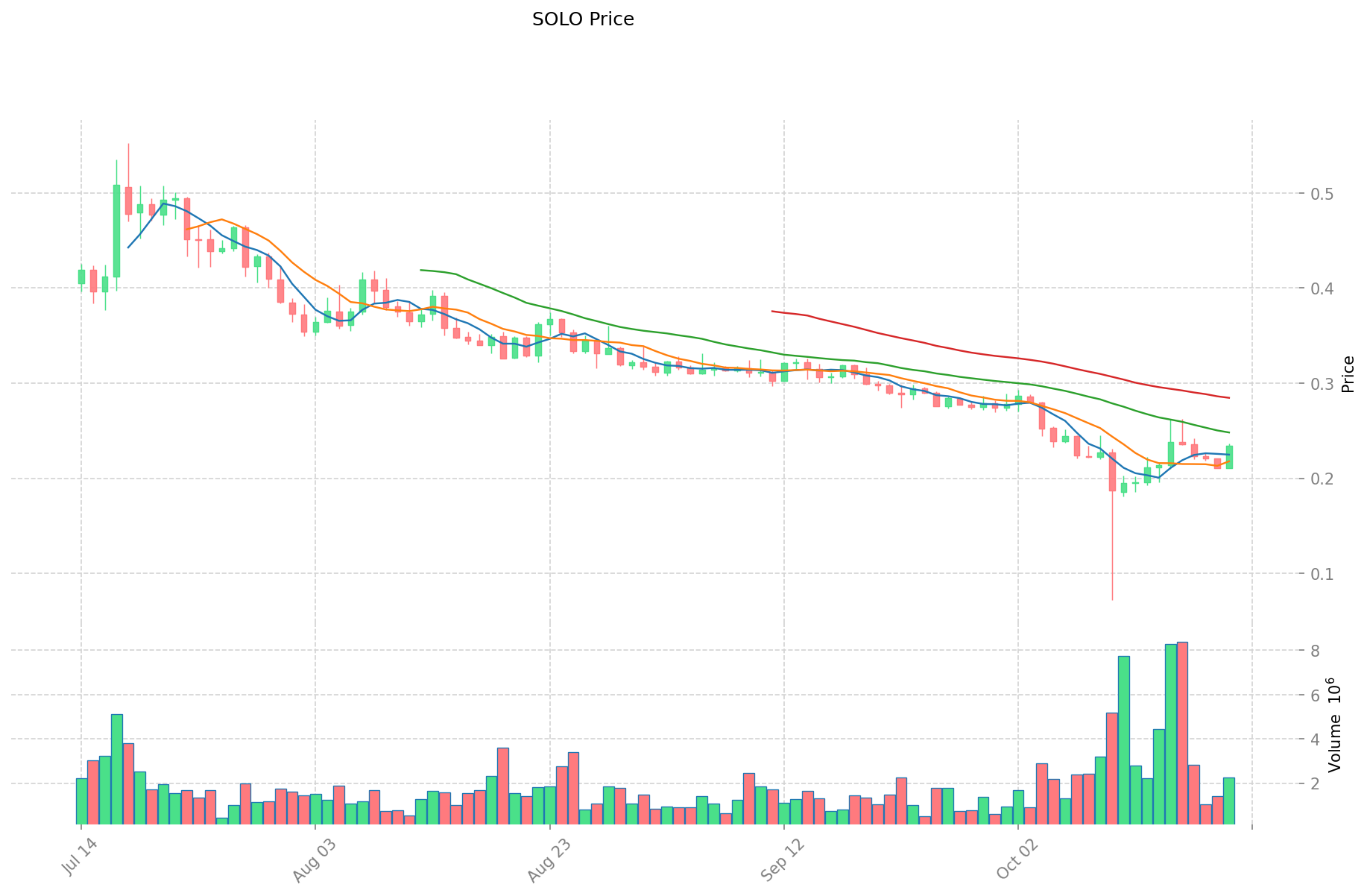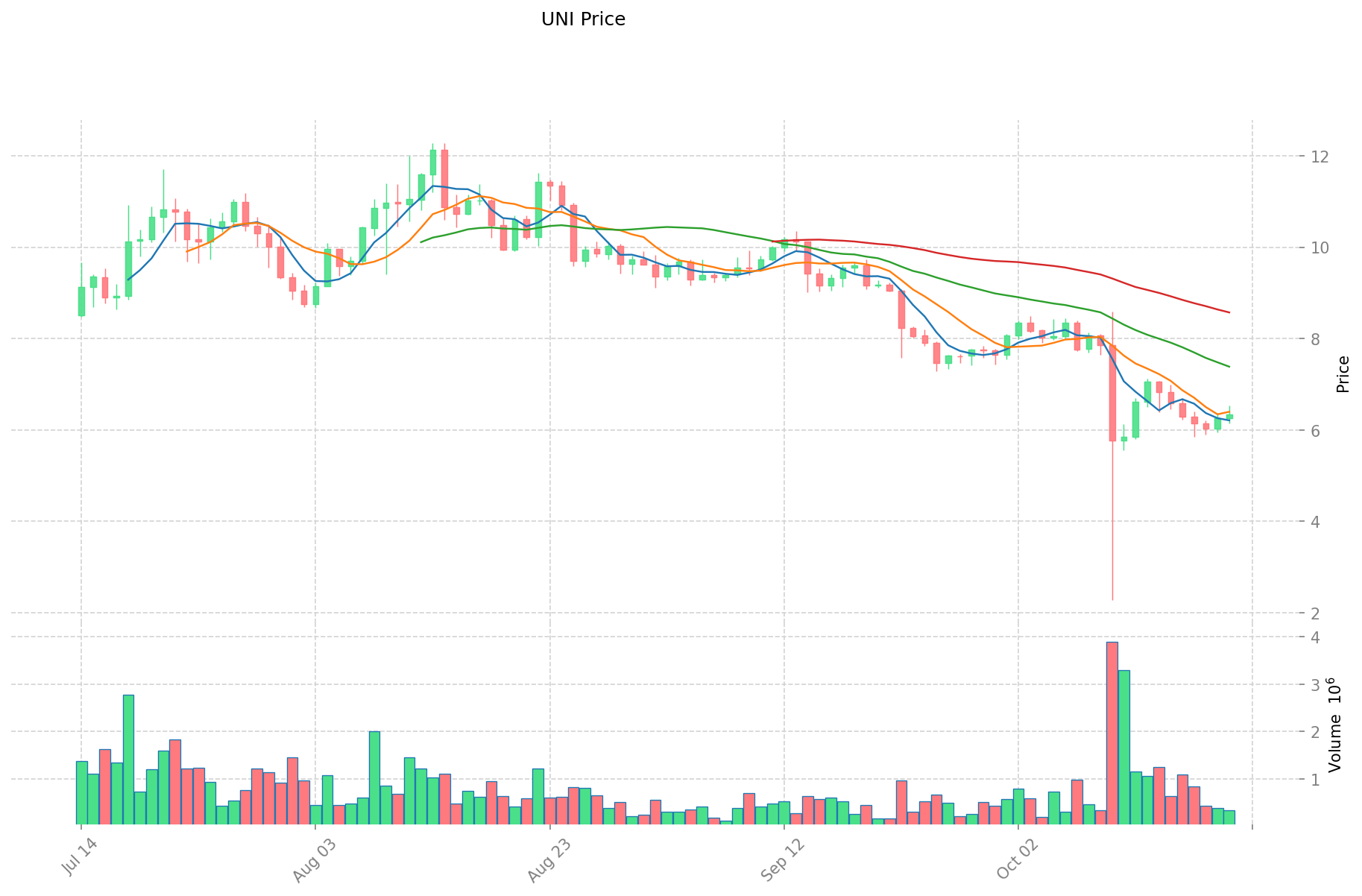SOLO vs UNI: The Battle of Learning Styles in Modern Education
Introduction: Investment Comparison between SOLO and UNI
In the cryptocurrency market, the comparison between Sologenic vs Uniswap has been an unavoidable topic for investors. The two not only show significant differences in market cap ranking, application scenarios, and price performance, but also represent different positioning in the crypto asset space.
Sologenic (SOLO): Since its launch, it has gained market recognition for enabling trading and transfer between cryptocurrencies and non-blockchain assets.
Uniswap (UNI): Established in 2020, it has been hailed as the first automatic market-making transaction protocol on the Ethereum blockchain, becoming one of the most traded and highest market cap cryptocurrencies globally.
This article will comprehensively analyze the investment value comparison between SOLO and UNI, focusing on historical price trends, supply mechanisms, institutional adoption, technological ecosystems, and future predictions, attempting to answer the question investors care about most:
"Which is the better buy right now?"
I. Price History Comparison and Current Market Status
SOLO and UNI Historical Price Trends
- 2021: SOLO reached its all-time high of $6.55 due to increased adoption and market enthusiasm.
- 2020: UNI launched with an airdrop to Uniswap users, causing significant price appreciation.
- Comparative analysis: During the 2022 bear market, SOLO dropped from its high of $6.55 to a low of $0.061723, while UNI showed more resilience, maintaining a higher price level.
Current Market Situation (2025-10-21)
- SOLO current price: $0.23409
- UNI current price: $6.332
- 24-hour trading volume: SOLO $506,563 vs UNI $2,164,307
- Market Sentiment Index (Fear & Greed Index): 29 (Fear)
Click to view real-time prices:
- Check SOLO current price Market Price
- Check UNI current price Market Price


II. Core Factors Affecting Investment Value of SOLO vs UNI
Technical Innovation and Performance
- SOLO: Core advantages include extremely high transaction processing speed (TPS) and low latency
- UNI: Value dependent on its ecosystem and market demand
- 📌 Historical pattern: Technical performance directly impacts adoption rates and network value
Cost Structure Analysis
- SOLO: Extremely low transaction fees compared to mainstream blockchains like Ethereum
- UNI: Transaction costs tied to Ethereum network fees and liquidity depth
- 📌 Lower transaction costs typically lead to higher user adoption and increased network activity
Ecosystem Development
- SOLO: Investment value centered on technical innovation and performance capabilities
- UNI: Investment value heavily dependent on ecosystem growth and sustained market demand
- 📌 Ecosystems with strong developer communities typically show more resilient growth patterns
Founding Team and Governance
- Core assessment factors for investors include founding team backgrounds and equity distribution rationality
- Project governance structure impacts long-term development trajectory and adaptability
- 📌 Projects with transparent governance and experienced teams tend to weather market volatility better
III. Price Prediction for 2025-2030: SOLO vs UNI
Short-term Prediction (2025)
- SOLO: Conservative $0.2062 - $0.2343 | Optimistic $0.2343 - $0.2882
- UNI: Conservative $5.2581 - $6.3350 | Optimistic $6.3350 - $6.5251
Mid-term Prediction (2027)
- SOLO may enter a growth phase, with an estimated price range of $0.2096 - $0.4440
- UNI may enter a consolidation phase, with an estimated price range of $4.2670 - $8.8387
- Key drivers: Institutional capital inflow, ETFs, ecosystem development
Long-term Prediction (2030)
- SOLO: Base scenario $0.3774 - $0.4901 | Optimistic scenario $0.4901 - $0.5538
- UNI: Base scenario $6.0888 - $11.2756 | Optimistic scenario $11.2756 - $15.8986
Disclaimer
SOLO:
| 年份 | 预测最高价 | 预测平均价格 | 预测最低价 | 涨跌幅 |
|---|---|---|---|---|
| 2025 | 0.2882259 | 0.23433 | 0.2062104 | 0 |
| 2026 | 0.355338012 | 0.26127795 | 0.224699037 | 11 |
| 2027 | 0.44396349264 | 0.308307981 | 0.20964942708 | 31 |
| 2028 | 0.5529195331254 | 0.37613573682 | 0.3610903073472 | 60 |
| 2029 | 0.515625674819697 | 0.4645276349727 | 0.343750449879798 | 98 |
| 2030 | 0.553786620032704 | 0.490076654896198 | 0.377359024270072 | 109 |
UNI:
| 年份 | 预测最高价 | 预测平均价格 | 预测最低价 | 涨跌幅 |
|---|---|---|---|---|
| 2025 | 6.52505 | 6.335 | 5.25805 | 0 |
| 2026 | 8.80913425 | 6.430025 | 3.858015 | 1 |
| 2027 | 8.838712365 | 7.619579625 | 4.26696459 | 20 |
| 2028 | 12.1791360726 | 8.229145995 | 7.15935701565 | 29 |
| 2029 | 12.347010650898 | 10.2041410338 | 7.346981544336 | 61 |
| 2030 | 15.89856193771209 | 11.275575842349 | 6.08881095486846 | 77 |
IV. Investment Strategy Comparison: SOLO vs UNI
Long-term vs Short-term Investment Strategies
- SOLO: Suitable for investors focused on technical innovation and potential for high transaction speeds
- UNI: Suitable for investors looking for ecosystem growth and market demand-driven value
Risk Management and Asset Allocation
- Conservative investors: SOLO: 20% vs UNI: 80%
- Aggressive investors: SOLO: 40% vs UNI: 60%
- Hedging tools: Stablecoin allocation, options, cross-currency portfolios
V. Potential Risk Comparison
Market Risk
- SOLO: Higher volatility due to lower market cap and trading volume
- UNI: Dependent on overall DeFi market trends and Ethereum ecosystem performance
Technical Risk
- SOLO: Scalability, network stability
- UNI: Smart contract vulnerabilities, Ethereum network congestion
Regulatory Risk
- Global regulatory policies may have different impacts on both tokens, with UNI potentially facing more scrutiny due to its role in decentralized finance
VI. Conclusion: Which Is the Better Buy?
📌 Investment Value Summary:
- SOLO advantages: High transaction speed, low fees, potential for growth in non-blockchain asset trading
- UNI advantages: Established ecosystem, higher liquidity, strong market position in DeFi
✅ Investment Advice:
- New investors: Consider a smaller allocation to SOLO for potential growth, larger allocation to UNI for stability
- Experienced investors: Balanced portfolio with both, adjusting based on risk tolerance and market trends
- Institutional investors: UNI for liquidity and ecosystem exposure, SOLO for diversification and potential technological breakthroughs
⚠️ Risk Warning: The cryptocurrency market is highly volatile. This article does not constitute investment advice. None
VII. FAQ
Q1: What are the main differences between SOLO and UNI? A: SOLO focuses on high transaction speed and low fees, enabling trading between crypto and non-blockchain assets. UNI is a leading DeFi protocol on Ethereum, known for its ecosystem and market demand-driven value.
Q2: Which token has shown better price performance historically? A: UNI has shown more resilience in price performance, especially during the 2022 bear market. SOLO experienced a more significant drop from its all-time high.
Q3: What are the key factors affecting the investment value of SOLO and UNI? A: Key factors include technical innovation, cost structure, ecosystem development, and governance. SOLO's value is centered on technical performance, while UNI's value is heavily dependent on its ecosystem growth and market demand.
Q4: How do the price predictions for SOLO and UNI compare for 2030? A: For 2030, SOLO's base scenario predicts a range of $0.3774 - $0.4901, while UNI's base scenario predicts $6.0888 - $11.2756. UNI is expected to have a higher potential upside in the long term.
Q5: What are the main risks associated with investing in SOLO and UNI? A: SOLO faces higher volatility due to lower market cap and trading volume, while UNI is more dependent on overall DeFi market trends. Both face technical and regulatory risks, with UNI potentially facing more regulatory scrutiny due to its role in DeFi.
Q6: How should investors allocate their portfolio between SOLO and UNI? A: Conservative investors might consider 20% SOLO and 80% UNI, while aggressive investors might opt for 40% SOLO and 60% UNI. The allocation should be adjusted based on individual risk tolerance and market trends.
Q7: Which token is considered a better buy for different types of investors? A: New investors might consider a smaller allocation to SOLO for potential growth and a larger allocation to UNI for stability. Experienced investors could maintain a balanced portfolio with both. Institutional investors might prefer UNI for liquidity and ecosystem exposure, while considering SOLO for diversification and potential technological breakthroughs.
Share
Content